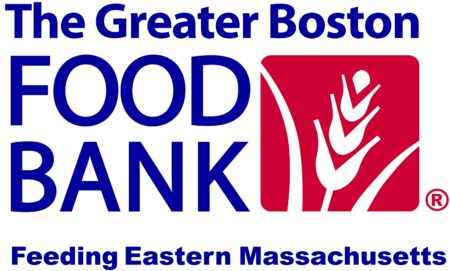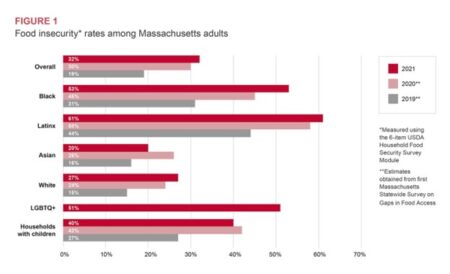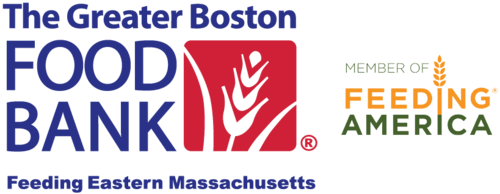Greater Boston Food Bank Releases Second Annual Report on Food Insecurity, Equity and Access in Massachusetts

FOR IMMEDIATE RELEASE
Greater Boston Food Bank Releases Second Annual Report on Food Insecurity, Equity and Access in Massachusetts
Amidst highest food costs in 40 years, new report reveals increased food insecurity across state; highlights continued disparities for communities of color and introduces new data on LGBTQ+ and Discrimination
BOSTON – June 6, 2022 –The Greater Boston Food Bank (GBFB) published its second annual Massachusetts statewide survey on food insecurity, equity, and access to hunger-relief assistance programs. The new study, “Opportunities to Improve Food Equity & Access in Massachusetts,” conducted in late 2021 and early 2022 expands on the findings of the first survey conducted the previous year and includes additional data on gender identity and sexual orientation, food pantry users’ experience, perceived discrimination, and SNAP recipients’ experiences. Building on the previous year’s report which examined utilization in hunger-relief programs and validated investments across the state with the goals of decreasing stigma around accessing food assistance and addressing gaps in food access.
This year’s statewide survey was conducted by GBFB’s Business and Data Analytics team, in partnership with Lauren Fiechtner, MD, MPH, director of Nutrition at Mass General for Children (MGfC) and GBFB’s Senior Health and Research Advisor, to identify the prevalence of food insecurity during the second year of the COVID-19 pandemic, as well as gaps and disparities in food assistance use in order to develop data-driven recommendations to increase food equity and access. A representative sample of 3,000 adults took the survey with low-income adults oversampled to reach those most likely in need of food assistance. Statistical methods were used to obtain estimates representative of the Massachusetts population.
The report confirms that high levels of food insecurity remained elevated across the state throughout 2021, with the highest levels among Latinx and Black communities, those identifying as LGBTQ+, and households with children.
“The preexisting inequities and gaps in food access that were exacerbated by the pandemic persist in our state, continuing to disproportionately and detrimentally affect Massachusetts’ most vulnerable residents,” said Catherine D’Amato, GBFB President and CEO. “In the face of the highest increase in the cost for food we’ve seen in 40 years, which is contributing to the enduring inequity and unprecedented need for food assistance, we remain committed to our mission of ending hunger alongside our network of partners throughout Massachusetts. By increasing awareness and advancing data-driven actions, we aim to decrease the inequities in food access and improve the experiences for those that rely on hunger-relief programs across the Commonwealth.”
This report was funded by the Hunger to Health Collaboratory (H2HC) and Stop & Shop.
Food Insecurity in Massachusetts
GBFB’s report estimates that 32 percent – or 1.8 million adults in the state experienced food insecurity in 2021. Food insecurity rates were highest among Latinx adults, Black adults, people who identify as LGBTQ+ and adults with children.

From 2020 to 2021, food insecurity rates increased and remained disproportionately high for communities of color. Concurrently, both food pantry use and SNAP enrollment increased for both Latinx and Black populations.
The report also highlights alarming disparities in food access among those that identify as LGBTQ+, a category new to this year’s report. Throughout 2021, 51 percent of LGBTQ+ identifying Massachusetts residents faced food insecurity.
“The survey responses not only show the prevalence of food insecurity in Massachusetts but also show that many more people are reaching out for assistance either by going to a food pantry or by signing up for SNAP,” said Fiechtner, an assistant professor of pediatrics at Harvard Medical School. “By focusing on removing some of the barriers and inequities that exist, we can help ensure that people gain greater access to the nutritious food that they need to live healthy active lives.”
Key Facilitators to Food Assistance Program Use
According to the report, from 2020 to 2021, Massachusetts saw Supplemental Nutritional Assistance Program (SNAP) enrollment among adults experiencing food insecurity increase from 46 percent to 55 percent. Likewise, food pantry use among food insecure adults increased from 32 percent in 2020 to 46 percent in 2021, pointing to more food-insecure individuals accessing needed assistance. As SNAP benefits increased in response to COVID-19, the increased benefits freed up money for 71 percent of SNAP users to pay bills, but 84 percent remained concerned with being able to afford enough food if the amount were to decrease.
“I am SO VERY GRATEFUL for my [increased SNAP] benefits [during COVID], since it means I can afford to buy higher quality food on a much more frequent basis,” wrote a SNAP participant from Boston.
Key Barriers to Food Assistance Program Use
Despite more food-insecure adults accessing food assistance programs, the reasons food-insecure adults did not access food pantries and/or SNAP benefits echoed the findings of the previous year. A desire for self-sufficiency remained a hindrance to SNAP use, with 75 percent of those surveyed agreeing that they would prefer to support themselves instead of using SNAP. Additional barriers to participation include concerns about eligibility (70 percent), taking benefits from those who need it more (64 percent), and embarrassment (58 percent).
Food pantry use among food-insecure adults increased from 1 in 3 in 2020 to 1 in 2 in 2021. Inflation, high grocery costs, and decreased income were cited as primary reasons that new food pantry users started visiting a pantry in 2021. Increased federal assistance programs and increased income were the top reasons some people stopped relying on pantries in 2021, while others found transportation issues, food preferences, and the time pantries were open as barriers to access.
The inconveniences of food pantry use pose unique challenges, especially for individuals and families with low incomes. Transportation is a key obstacle, as 2 out of 3 pantry users rely on transportation other than their own car.
“My vehicle died recently, and I have 4 little kids, to I get rides [to the food pantry] when I’m able to find a ride and a babysitter, but it isn’t easy, especially in a pandemic,” said one participant, a single mother from Attleboro. “So, I do wish they had any kind of option to help in situations like this. I’m extra behind on bills because I’ve had to use bill money for food.”
Suggestions from food pantry users to improve food pantry convenience and accessibility included grocery cards (54 percent of participants using food pantries), home delivery (49 percent), and online ordering (32 percent).
Programmatic and Policy Recommendations
In response to the continued need for food access, the report identified goals of increasing food assistance program use, enhancing food pantry convenience, and addressing disparities to access for Black, Latinx, and LGBTQ+ communities.
Programmatic recommendations include:
- Increasing public awareness and outreach to promote food and financial assistance programs
- Optimizing convenient food access alternatives and options at food pantries, including grocery gift cards and delivery programs
- Addressing inequities in food access; particularly for Black and Latinx communities, LGBTQ+ individuals, and households with children
Federal and State policy recommendations include supporting:
- The current Administration’s policy changes and programs, including the upcoming White House Conference on Hunger, Health and Nutrition
- The 2023 Farm Bill and Child Nutrition Reauthorization, challenging barriers to federal nutrition programs
- Policies that protect vulnerable populations such as students, communities of color, families and LGBTQ+ while continuing increased funding for MEFAP and HIP
- Policies aimed at confronting poverty and advancing workforce development
Last year’s study findings were used by GBFB to inform testimonies supporting statewide advocacy campaigns focused on increasing food assistance including a SNAP awareness campaign in Massachusetts, support for the Common Application for SNAP and MassHealth, the federal Thrifty Food Plan and Universal School Meals. Programmatic changes over the last year were validated by efforts investing in food agencies serving communities of color and lower incomes. The State’s Food Security Infrastructure Grant Program (FSIG) provided $15 million to food assistance groups statewide; and GBFB provided nearly $1 million to hunger relief organizations increasing their capacity and infrastructure in 2021. Of those funds, 82 percent were distributed to 41 communities serving high populations of color.
For More Information
The full report can be found here.
The food bank will host an open to the public virtual presentation to discuss this report in more detail on Wednesday, June 8th at 10:00 a.m. Please join us by registering in advance here.
Those facing food insecurity are encouraged to visit GBFB.org/need-food to access a full list of resources and search for food assistance programs by zip code.
About The Greater Boston Food Bank
The Greater Boston Food Bank (GBFB) is the largest hunger-relief organization in New England and among the largest food banks in the country. In response to the economic impact of the COVID-19 pandemic, GBFB distributed the equivalent of nearly 97 million meals in fiscal year 2021 through its network of 600 dedicated food distribution partners and programs in the 190 cities and towns across Eastern Massachusetts. A member of Feeding America, the nation’s food bank network, GBFB’s mission is to end hunger here and it is committed to providing at least three healthy meals a day to everyone in need. For more information, visit us at GBFB.org, follow us on Facebook, Twitter, and Instagram, or call us at 617.427.5200.
Media Contact
Catherine Lynn
GBFB
VP, Communications and Public Affairs
617.828.7422
press@gbfb.org
